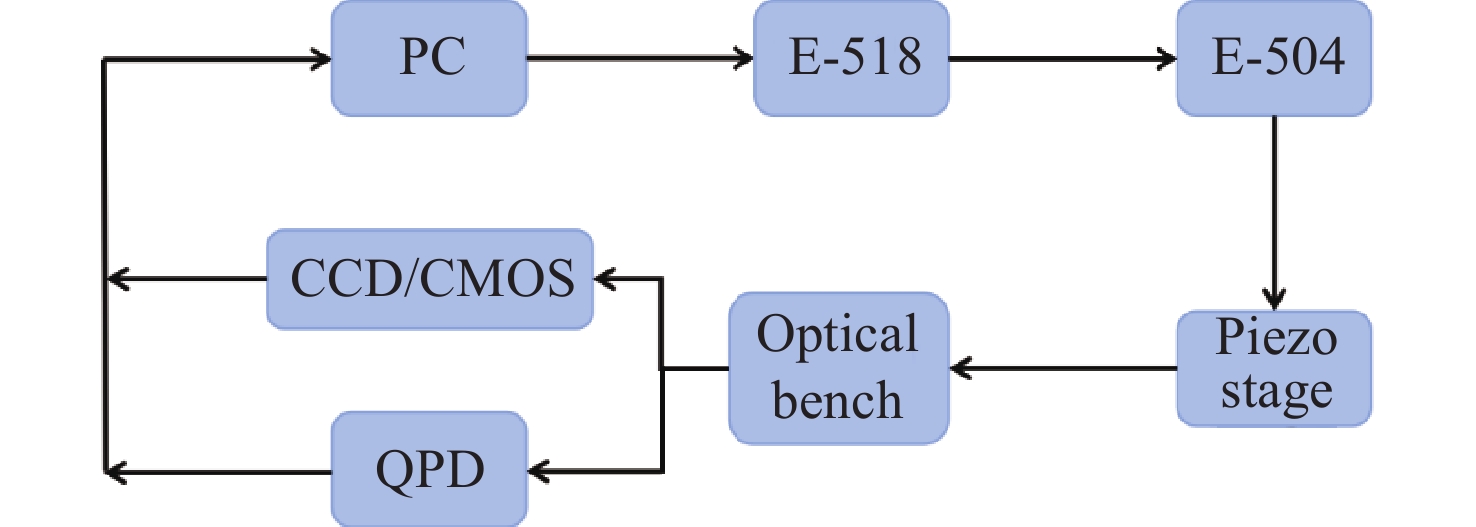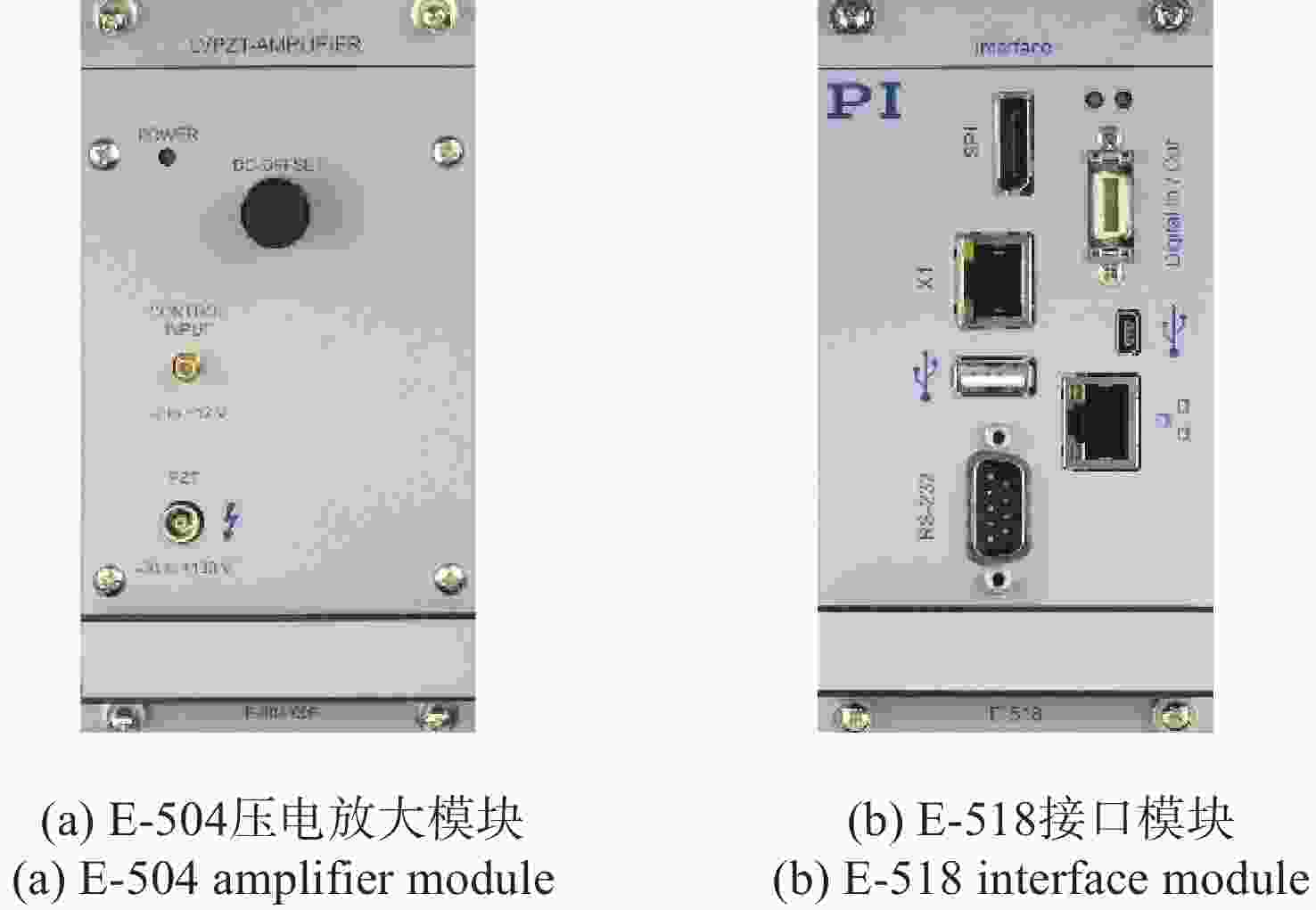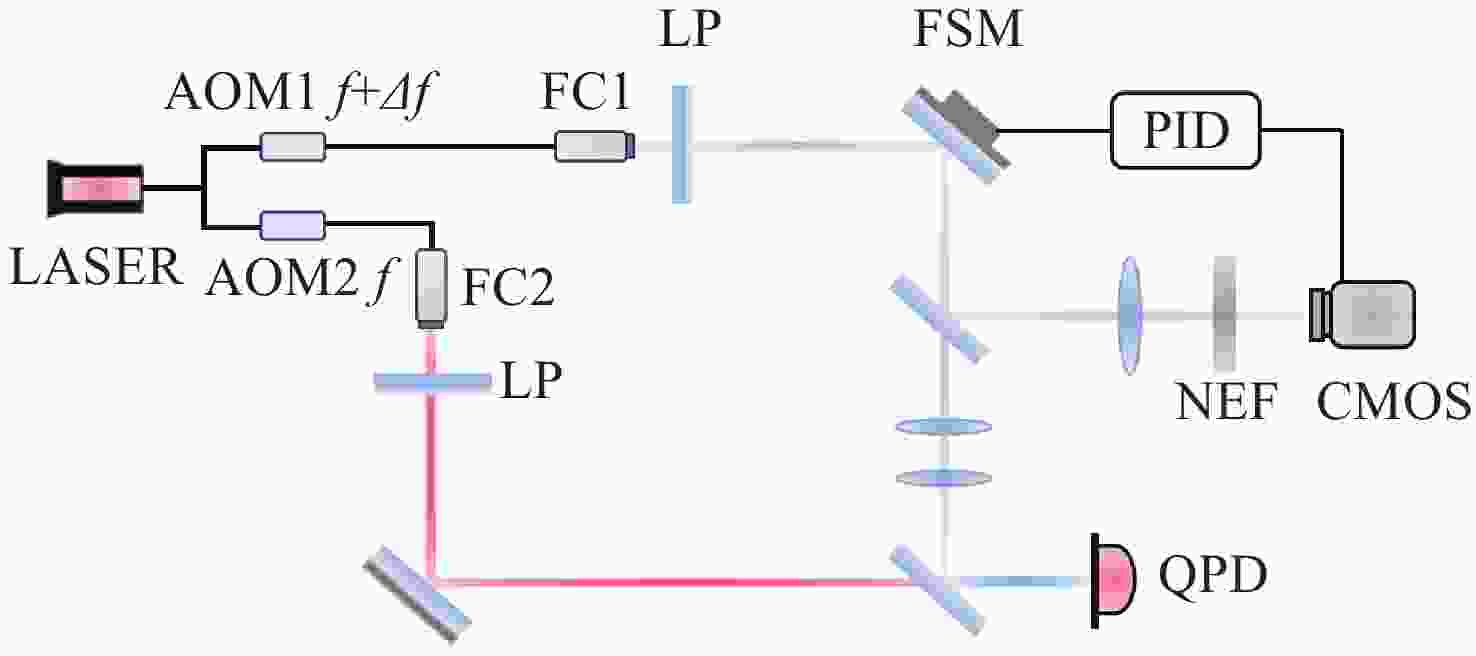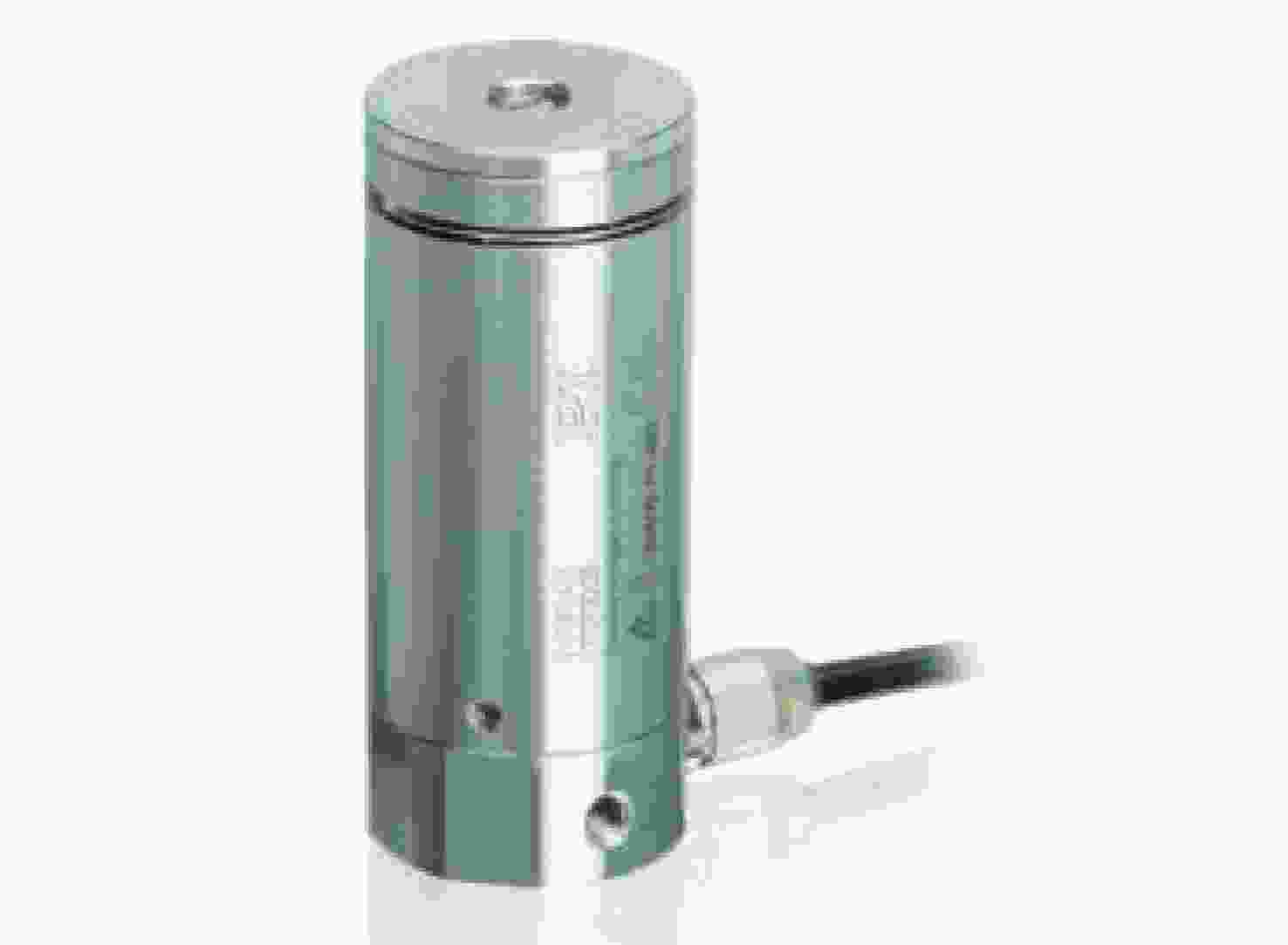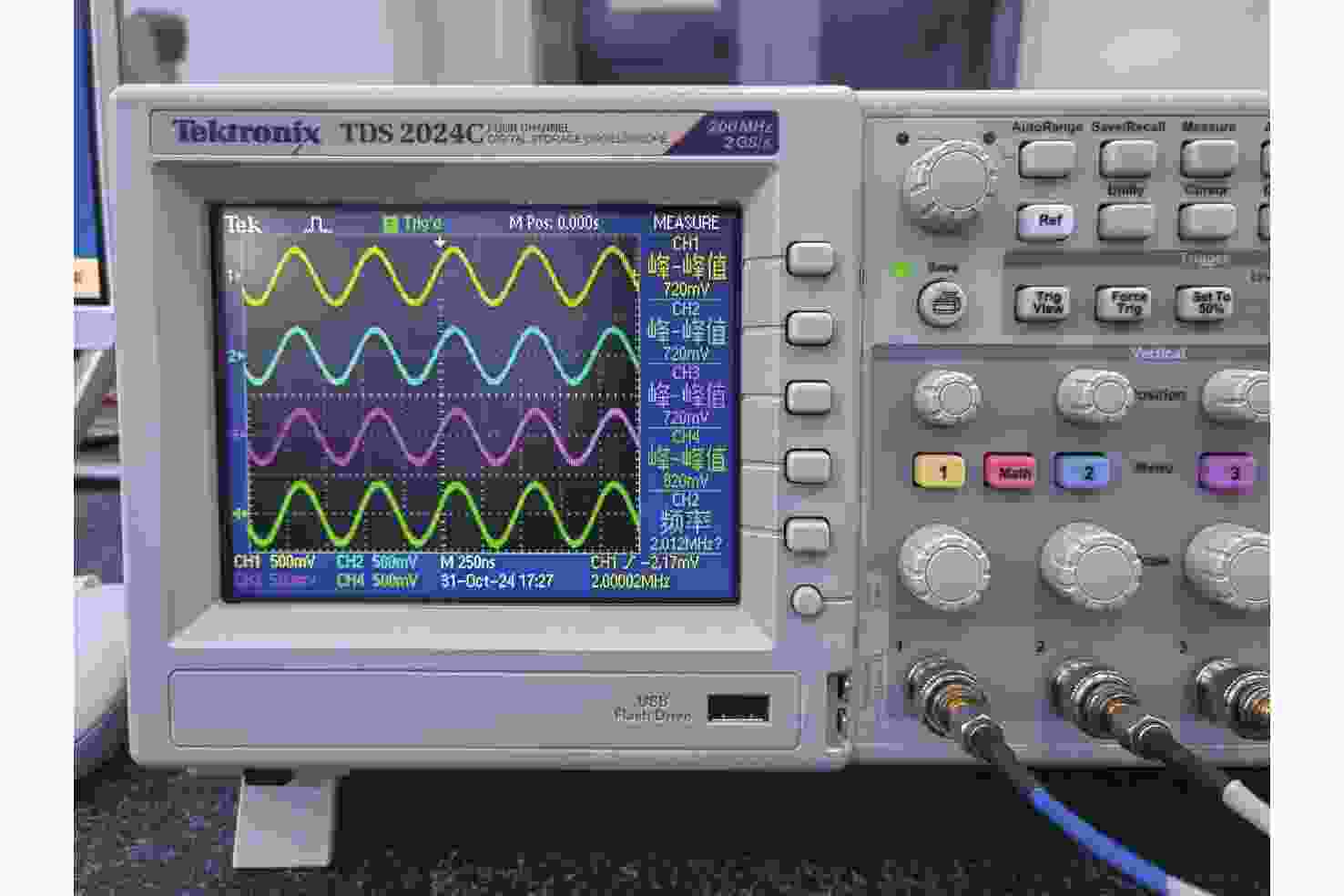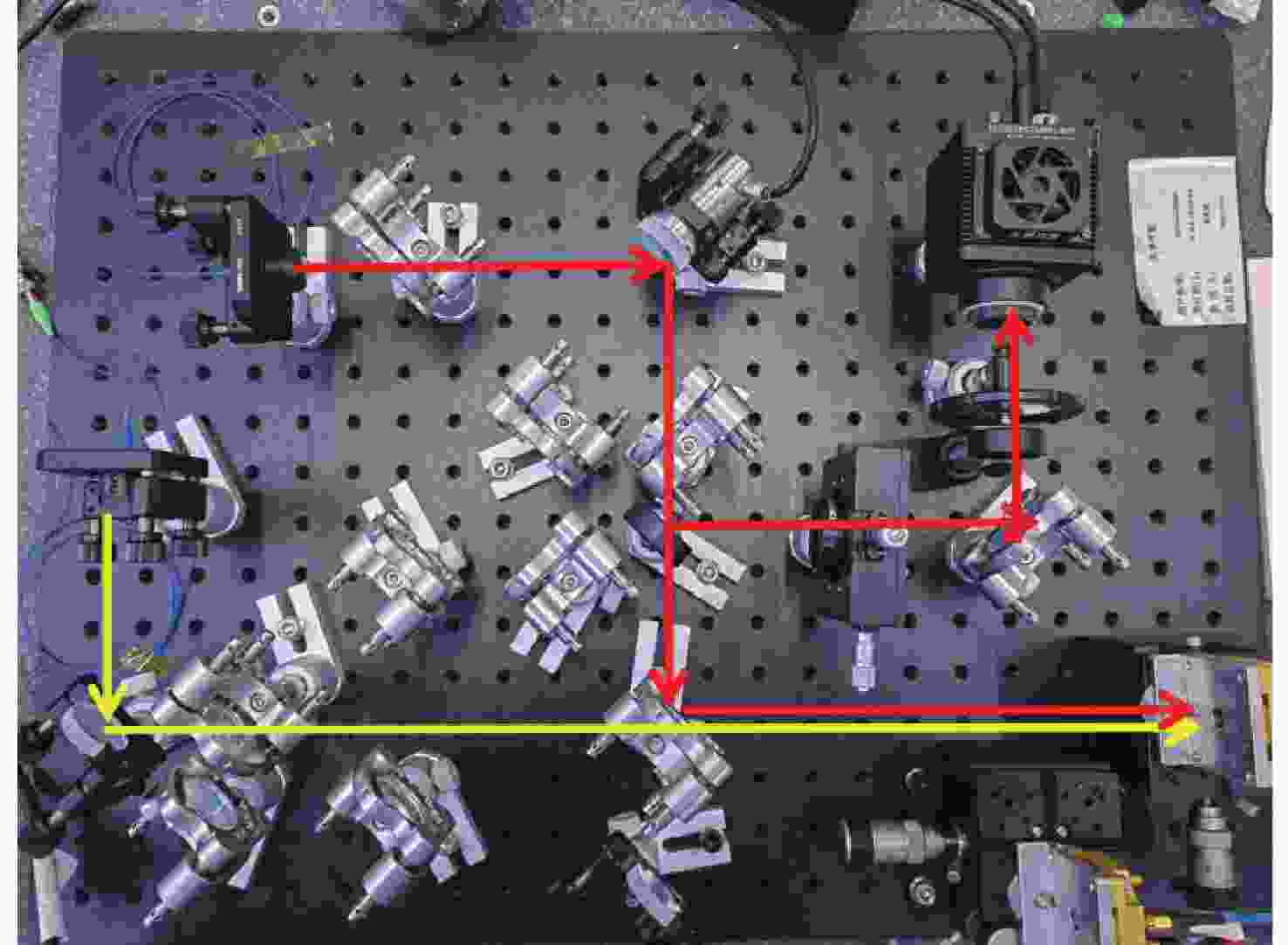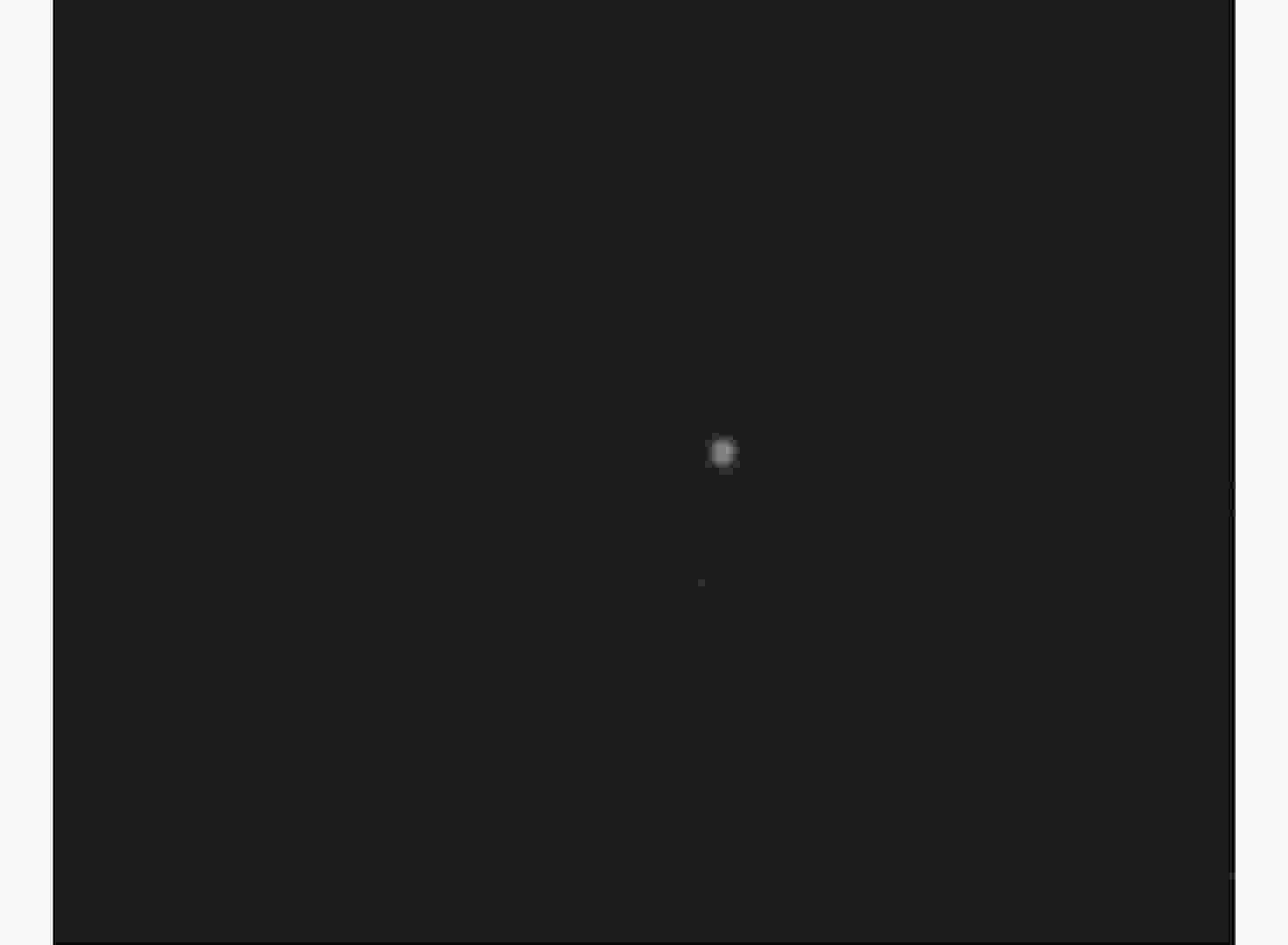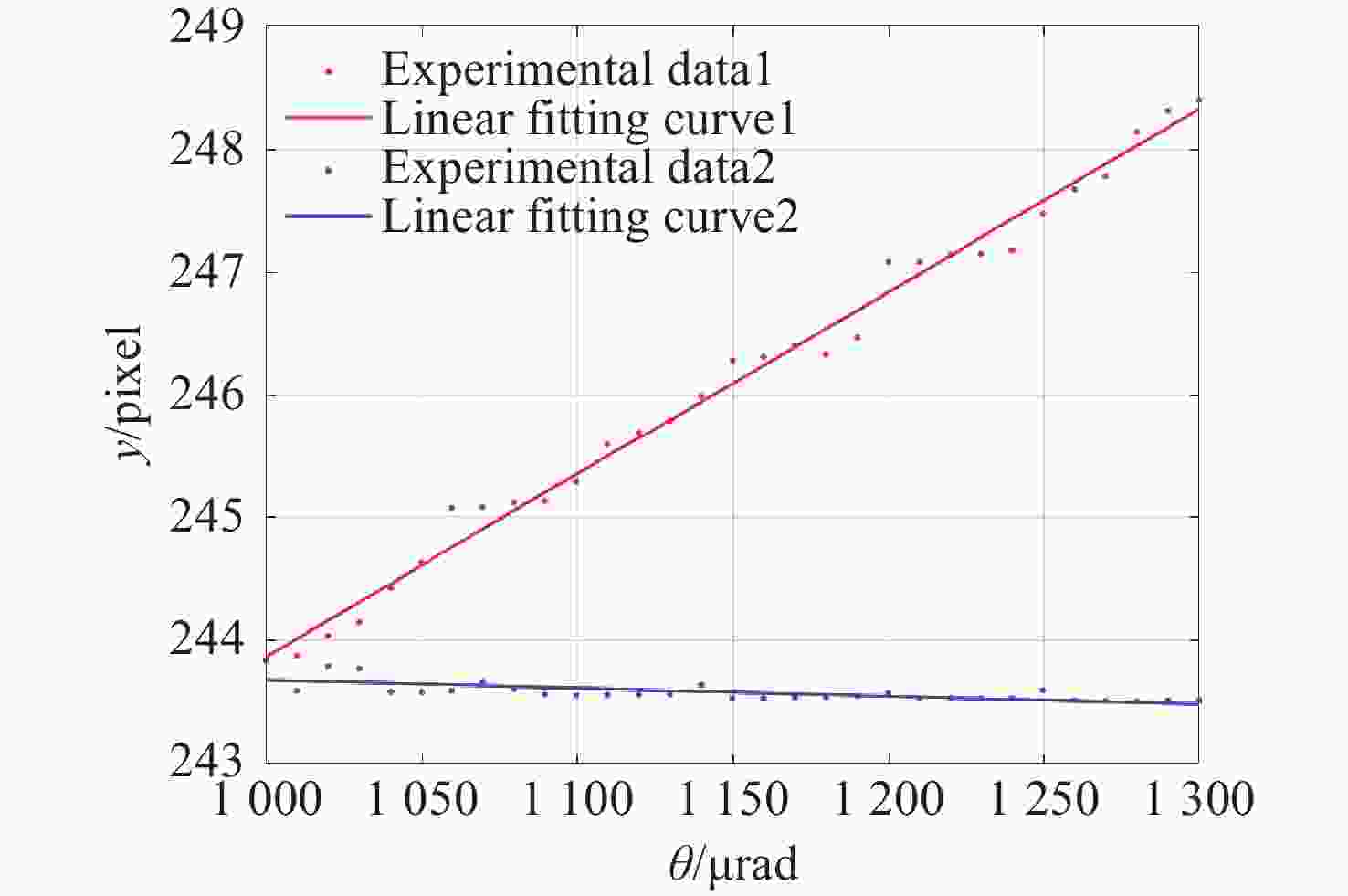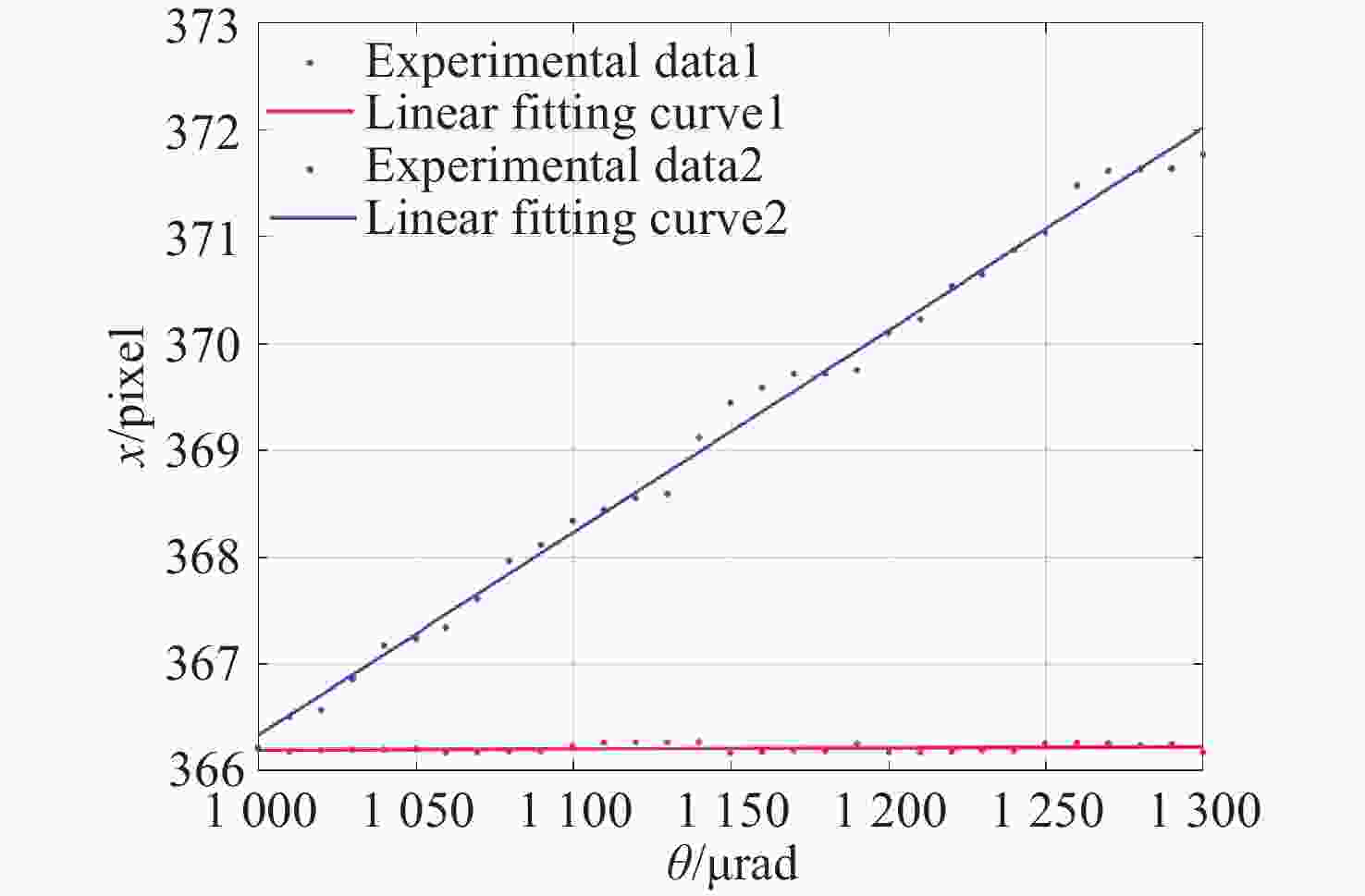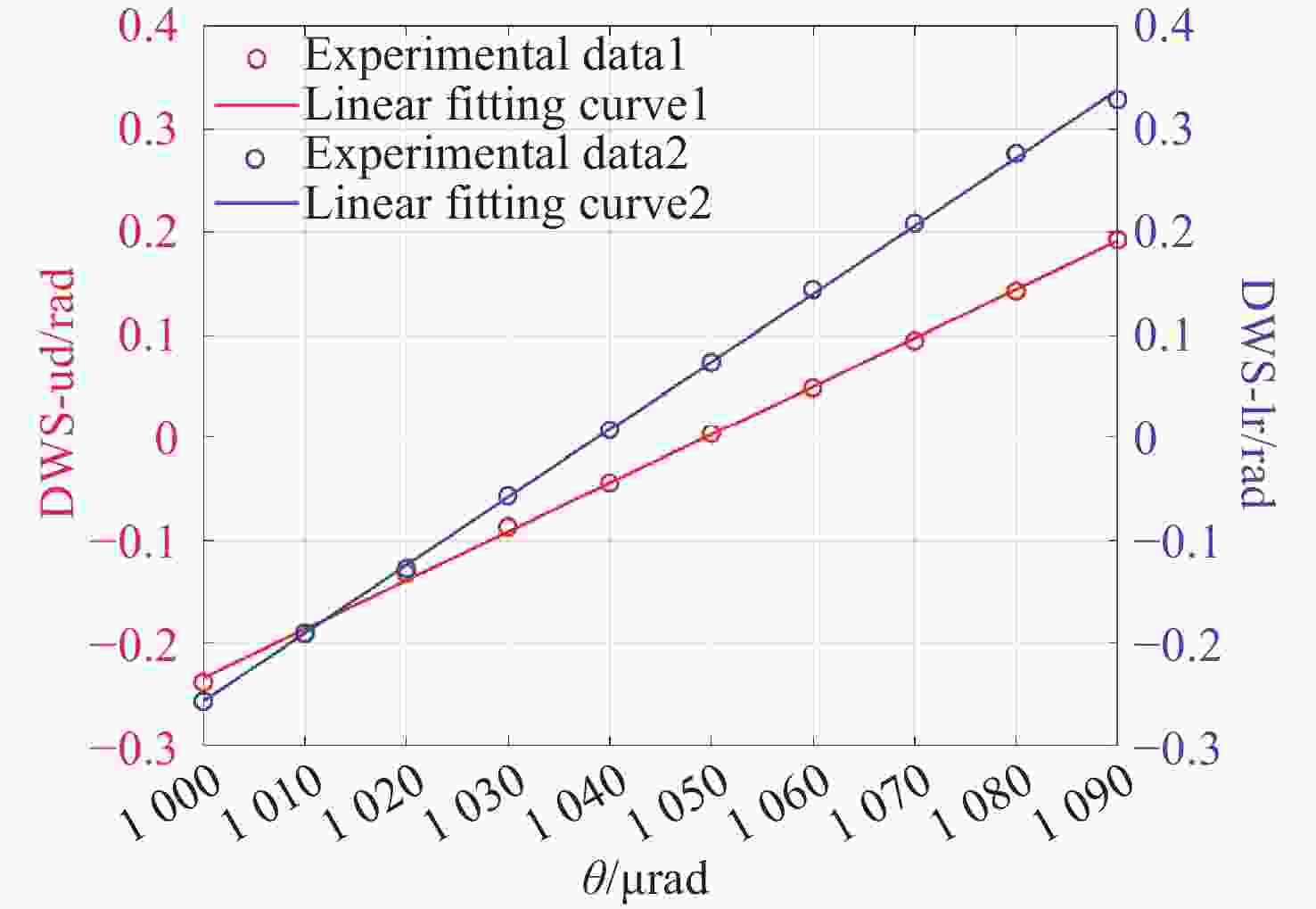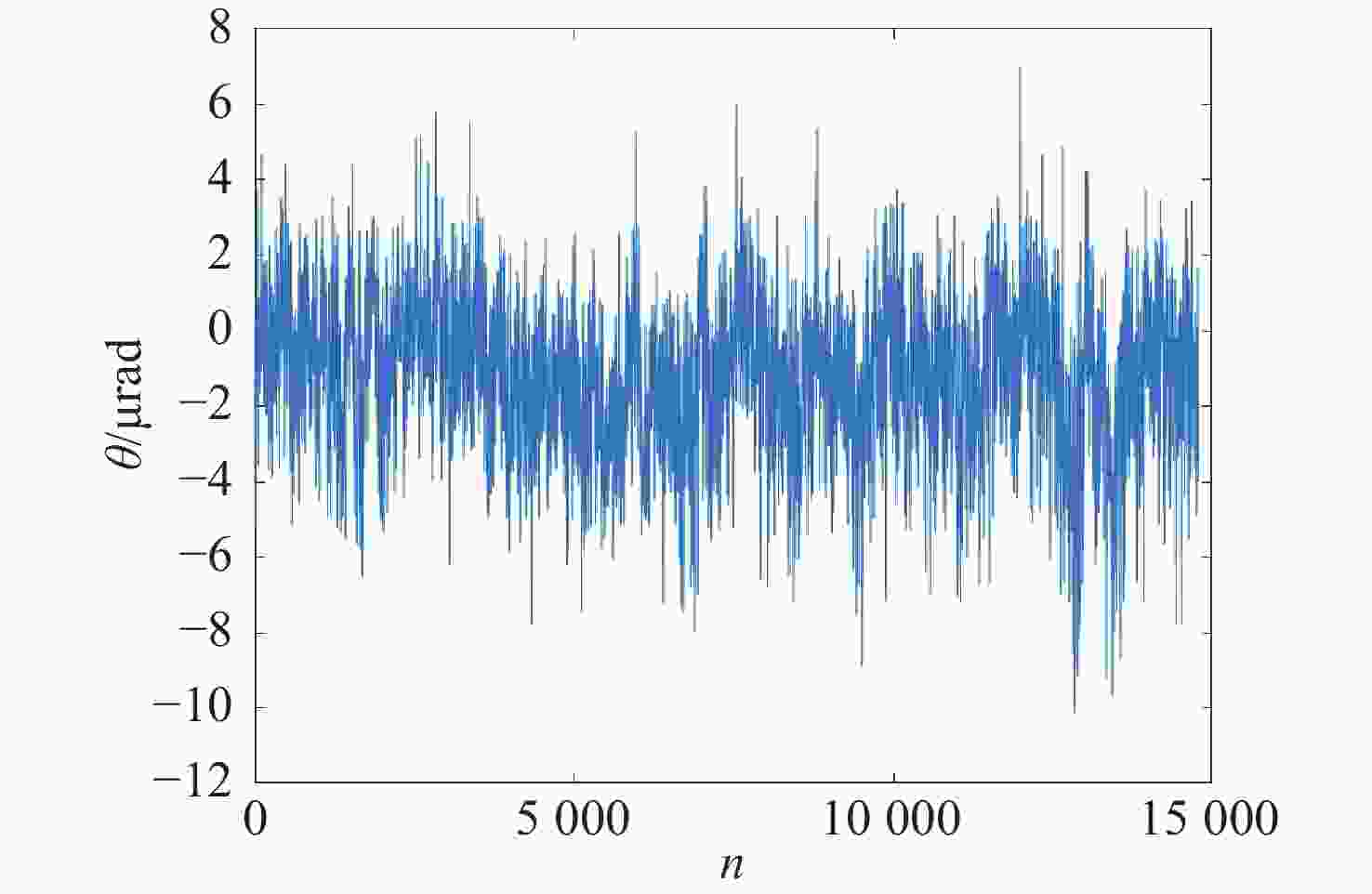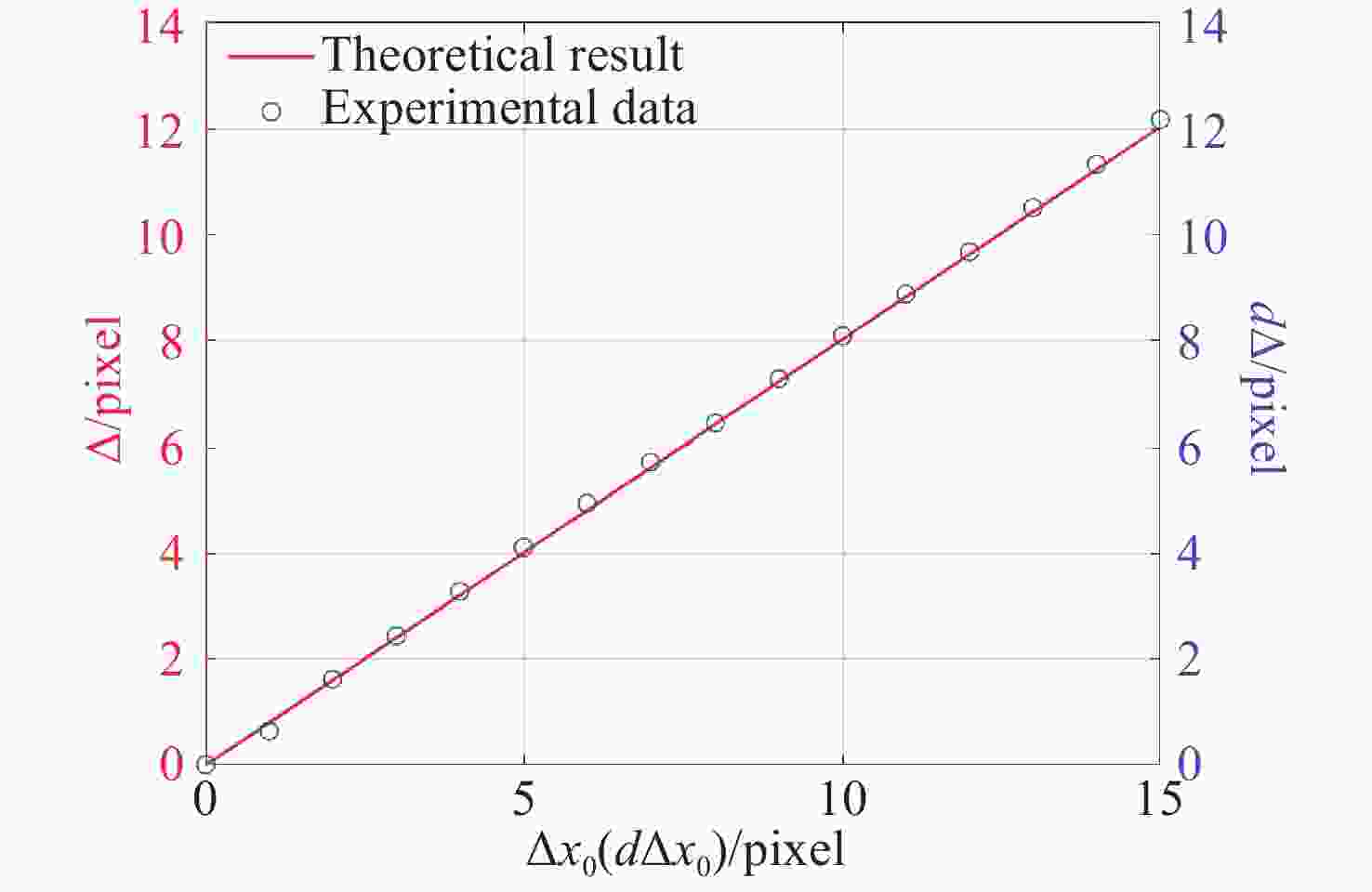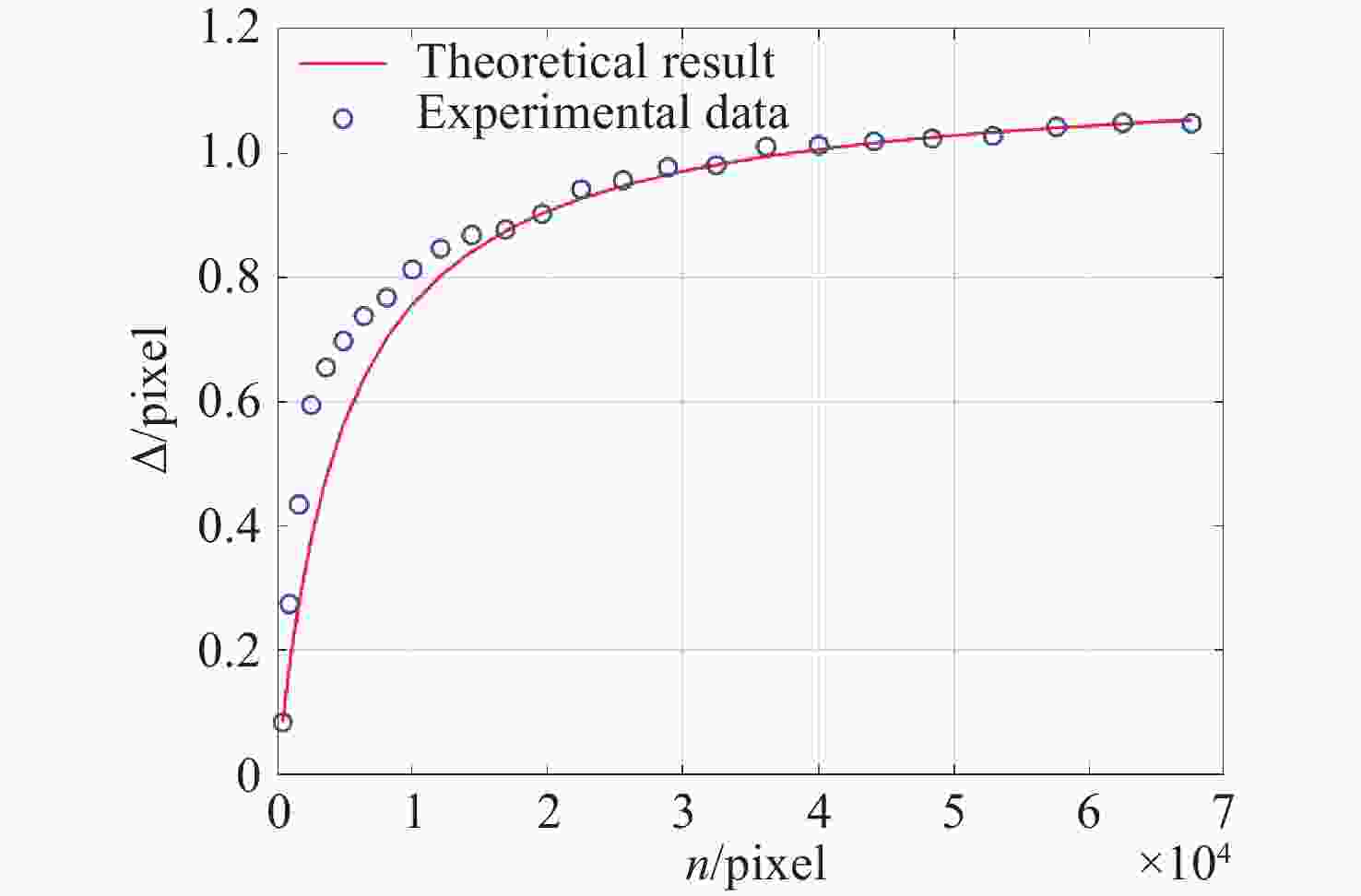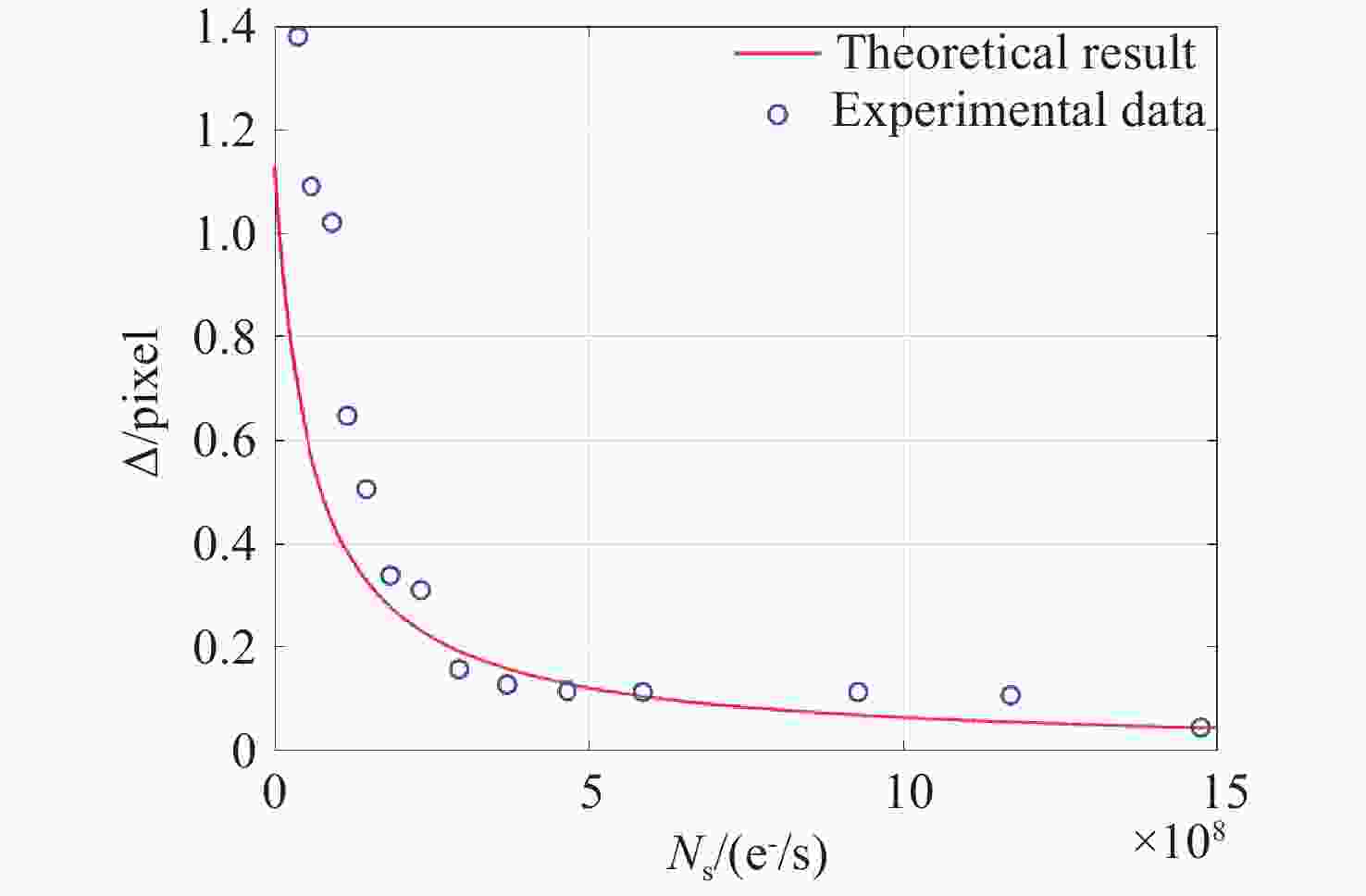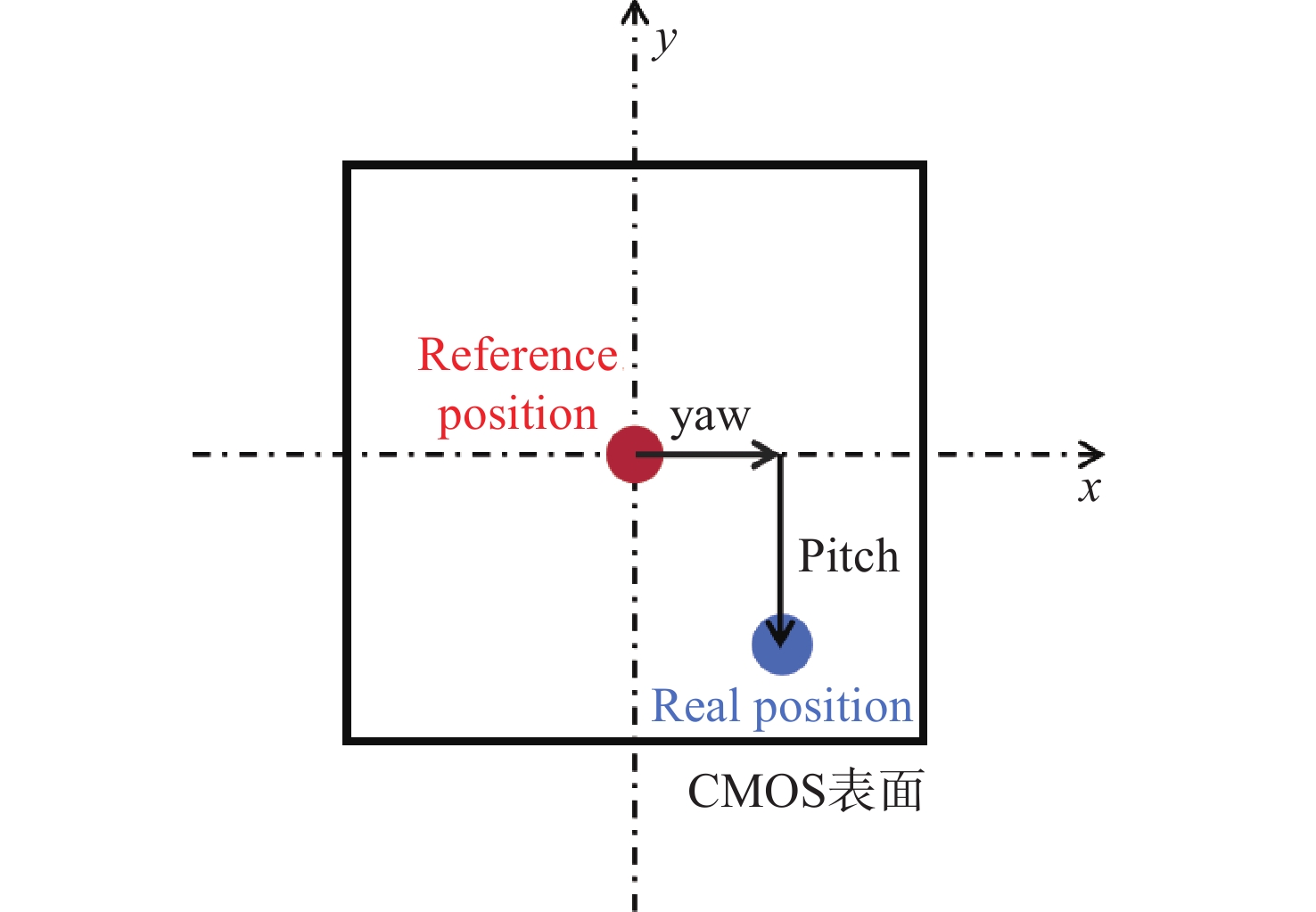Analysis and experimental verification of the influence of detector noise on the precision of spot center positioning
-
摘要:
空间引力波探测需要利用激光捕获技术构建星间激光链路,光斑中心定位是激光捕获阶段的核心测量技术。以太极计划为例,光斑中心定位精度要求优于0.1 pixel,由于传输距离较长,探测器表面的接收激光强度仅为100 pW量级,在低信噪比情况下大多数传统定位方法的精度受到很大影响。因此,研究探测器噪声如何影响光斑中心定位精度至关重要。针对上述问题,本文首先说明了激光捕获指向技术原理,然后理论分析了CMOS背景噪声影响光斑中心定位精度的机制,并介绍了一种改进的光斑中心定位算法。最后通过实验,测量了不同系统参数与CMOS背景噪声的耦合关系。实验结果与理论分析结果相符,验证了噪声模型的正确性,证明这种算法能在弱光情况下达到0.018 pixel的测量精度。
Abstract:The space-based gravitational wave detection need to use laser acquisition technique to construct the inter-satellite laser link, and the spot center positioning is the core technique for measurement in the laser acquisition phase. Taking the Taiji program for example, the spot center positioning precision should be less than 0.1 pixel. However, the receiving laser intensity is nearly 100 pW at the detector surface due to the long-distance propagation. The precision of most of the conventional positioning methods is significant degraded under low signal-to-noise ratio conditions, so it is crucial to study how detector noise affects the spot center positioning precision. To address these challenges, we first elucidate the operational principles of laser acquisition and pointing technique, then theoretically analyze the mechanism by which the background noise of CMOS affects the spot center positioning precision and introduce an improved spot center positioning algorithm. Finally, the coupling relationship between different system parameters and the background noise of CMOS is measured through the experiment. The experimental results agree with the theoretical analysis, validating the correctness of the noise model and proving that this algorithm can achieve the measurement precision of 0.018 pixel under weak light conditions.
-
图 14
$ \mathrm{\Delta } $ 与$ \mathrm{\Delta }{x}_{0} $ 的理论关系曲线和实验得到的$ d\mathrm{\Delta } $ 与$ d\mathrm{\Delta }{x}_{0} $ 关系数据Figure 14. The theoretical relationship between
$ \mathrm{\Delta } $ and$ \mathrm{\Delta }{x}_{0} $ and the relationship between$ d\mathrm{\Delta } $ and$ d\mathrm{\Delta }{x}_{0} $ obtained from the experiment表 1 SH640相机基本参数表
Table 1. Basic parameters of the SH640 camera
参数 数值 分辨率(n) 640 pixel×512 pixel 暗电流电子数期望(μ) 1.5×105 e−/s@25°C 暗电流电子数标准差(σ) 4.5×103 e−/s@25°C 像元尺寸(lg) 15 μm 光电转化效率(η) 0.7 A/W@ 1064 nm表 2 S-330.2SL压电偏摆台基本参数表
Table 2. Basic parameters of the S-330.2SL piezoelectric tilt/yaw stage
参数 指标 转动方向θX,θY变化范围 2 mrad 转动方向θX,θY分辨率 0.05 μrad 转动方向θX,θY重复精度,10%偏摆角 0.15 μrad 转动方向θX,θY重复精度,100%偏摆角 1.5 μrad -
[1] ABBOTT B P, ABBOTT R, ABBOTT T D, et al. GW150914: first results from the search for binary black hole coalescence with Advanced LIGO[J]. Physical Review D, 2016, 93(12): 122003. doi: 10.1103/PhysRevD.93.122003 [2] LUO Z R, GUO Z K, JIN G, et al. A brief analysis to Taiji: science and technology[J]. Results in Physics, 2020, 16: 102918. doi: 10.1016/j.rinp.2019.102918 [3] HU W R, WU Y L. The Taiji Program in Space for gravitational wave physics and the nature of gravity[J]. National Science Review, 2017, 4(5): 685-686. doi: 10.1093/nsr/nwx116 [4] JIN G. Program in space detection of gravitational wave in Chinese Academy of Sciences[J]. Journal of Physics: Conference Series, 2017, 840: 012009. doi: 10.1088/1742-6596/840/1/012009 [5] CIRILLO F, GATH F P. Control system design for the constellation acquisition phase of the LISA mission[J]. Journal of Physics: Conference Series, 2009, 154: 012014. doi: 10.1088/1742-6596/154/1/012014 [6] MAGHAMI P G, HYDE T T, KIM J. An acquisition control for the laser interferometer space antenna[J]. Classical and Quantum Gravity, 2005, 22(10): S421-S428. doi: 10.1088/0264-9381/22/10/038 [7] CIRILLO F. Controller design for the acquisition phase of the LISA mission using a Kalman filter[D]. Pisa: Università di Pisa, 2007. [8] 冷荣宽, 王上, 王智, 等. 空间引力波探测前向杂散光测量和抑制[J]. 中国光学(中英文),2023,16(5):1081-1088. doi: 10.37188/CO.2022-0251LENG R K, WANG SH, WANG ZH, et al. Measurement and suppression of forward stray light for spaceborne gravitational wave detection[J]. Chinese Optics, 2023, 16(5): 1081-1088. (in Chinese). doi: 10.37188/CO.2022-0251 [9] 王丽丽, 胡中文, 季杭馨. 基于高斯拟合的激光光斑中心定位算法[J]. 应用光学,2012,33(5):985-990.WANG L L, HU ZH W, JI H X. Laser spot center location algorithm based on Gaussian fitting[J]. Journal of Applied Optics, 2012, 33(5): 985-990. (in Chinese). [10] 杨耀权, 施仁, 于希宁, 等. 用Hough变换提高激光光斑中心定位精度的算法[J]. 光学学报,1999,19(12):1655-1660. doi: 10.3321/j.issn:0253-2239.1999.12.013YANG Y Q, SHI R, YU X N, et al. An algorithm to raise the locating precision of laser spot center based on Hough transform[J]. Acta Optica Sinica, 1999, 19(12): 1655-1660. (in Chinese). doi: 10.3321/j.issn:0253-2239.1999.12.013 [11] MORGAN J S, SLATER D C, TIMOTHY J G, et al. Centroid position measurements and subpixel sensitivity variations with the MAMA detector[J]. Applied Optics, 1989, 28(6): 1178-1192. doi: 10.1364/AO.28.001178 [12] KANE T J, WELSH B M, GARDNER C S, et al. Wavefront detector optimization for laser guided adaptive telescopes[J]. Proceedings of SPIE, 1989, 1114: 160-171. [13] CAO G R, YU X. Accuracy analysis of a Hartmann-Shack wavefront sensor operated with a faint object[J]. Optical Engineering, 1994, 33(7): 2331-2335. doi: 10.1117/12.169716 [14] PRIETO P M, VARGAS-MARTÍN F, GOELZ S, et al. Analysis of the performance of the Hartmann–Shack sensor in the human eye[J]. Journal of the Optical Society of America A, 2000, 17(8): 1388-1398. doi: 10.1364/JOSAA.17.001388 [15] BAKER K L, MOALLEM M M. Iteratively weighted centroiding for Shack-Hartmann wave-front sensors[J]. Optics Express, 2007, 15(8): 5147-5159. doi: 10.1364/OE.15.005147 [16] GAO R H, LIU H SH, ZHAO Y, et al. High-precision laser spot center positioning method for weak light conditions[J]. Applied Optics, 2020, 59(6): 1763-1768. doi: 10.1364/AO.381626 [17] 赵梦阳, 高瑞弘, 张强涛, 等. 太极计划激光链路构建地面模拟控制系统研究[J]. 中国激光,2023,50(19):1906003. doi: 10.3788/CJL221193ZHAO M Y, GAO R H, ZHANG Q T, et al. Research on simulated laser link construction control system of Taiji program[J]. Chinese Journal of Lasers, 2023, 50(19): 1906003. (in Chinese). doi: 10.3788/CJL221193 [18] GAO R H, WANG Y K, CUI ZH, et al. On-ground demonstration of laser-link construction for space-based detection of gravitational waves[J]. Optics and Lasers in Engineering, 2023, 160: 107287. doi: 10.1016/j.optlaseng.2022.107287 [19] 高瑞弘, 刘河山, 罗子人, 等. 太极计划激光指向调控方案介绍[J]. 中国光学,2019,12(3):425-431. doi: 10.3788/co.20191203.0425GAO R H, LIU H SH, LUO Z R, et al. Introduction of laser pointing scheme in the Taiji program[J]. Chinese Optics, 2019, 12(3): 425-431. (in Chinese). doi: 10.3788/co.20191203.0425 [20] 江强, 董鹏, 刘河山, 等. 太极计划时钟噪声传递的地面原理验证[J]. 中国光学(中英文),2023,16(6):1394-1403. doi: 10.37188/CO.2023-0012JIANG Q, DONG P, LIU H SH, et al. Ground-based principle verification of clock noise transfer for the Taiji program[J]. Chinese Optics, 2023, 16(6): 1394-1403. (in Chinese). doi: 10.37188/CO.2023-0012 [21] 张强涛, 刘河山, 罗子人. 面向空间激光干涉的多通道相位测量系统[J]. 中国光学(中英文),2023,16(5):1089-1099. doi: 10.37188/CO.2022-0258ZHANG Q T, LIU H SH, LUO Z R. Multi-channel phase measurement system for the space laser interferometry[J]. Chinese Optics, 2023, 16(5): 1089-1099. (in Chinese). doi: 10.37188/CO.2022-0258 [22] GAO R H, ZHAO M Y, LIU H SH, et al. Analysis of laser spot centroiding errors for laser acquisition system in gravitational wave detection missions[J]. Optics Express, 2024, 32(27): 48556-48570. doi: 10.1364/OE.542809 -





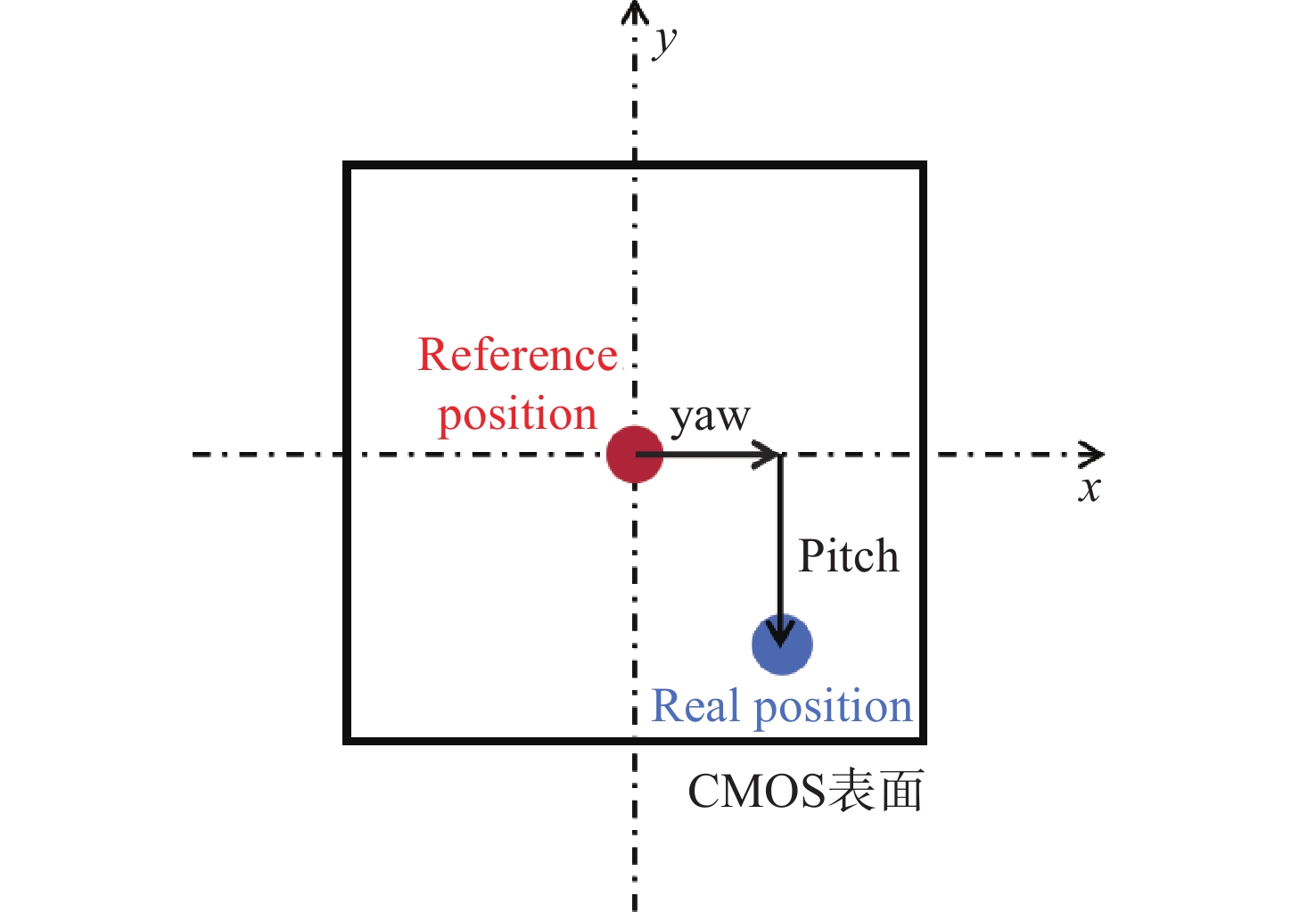
 下载:
下载:

